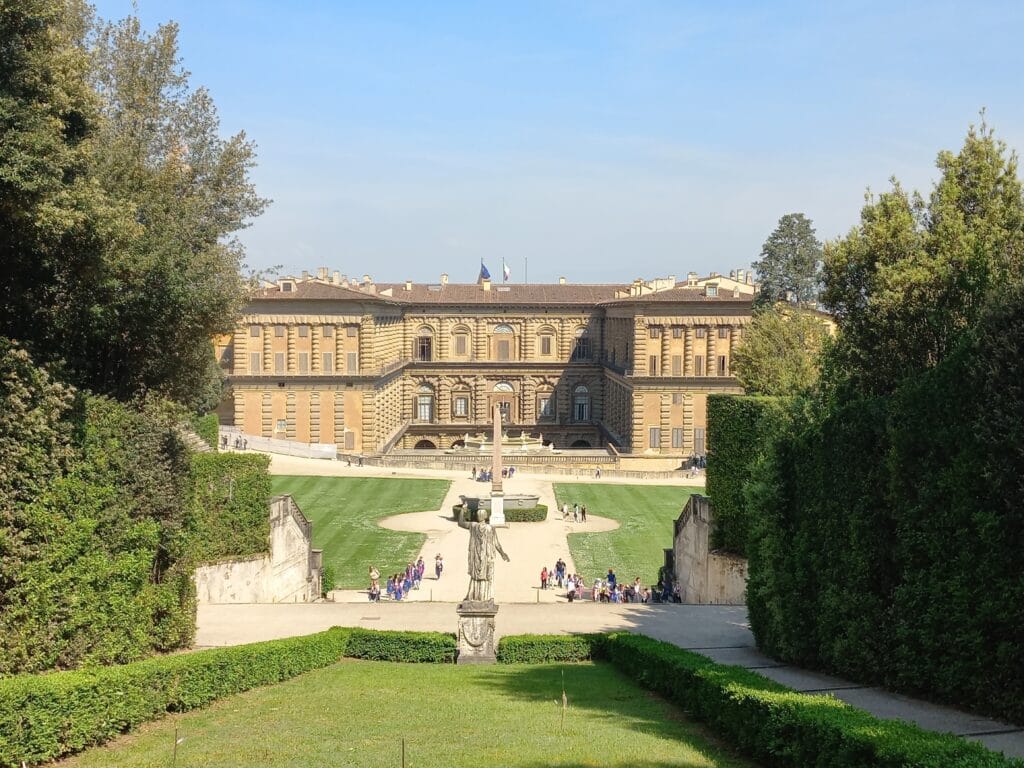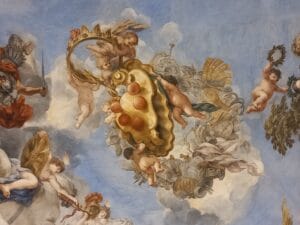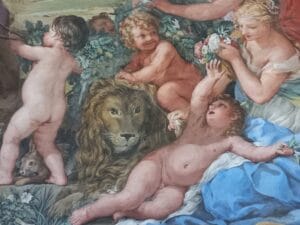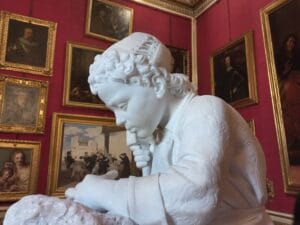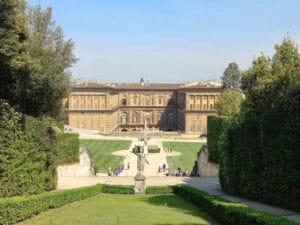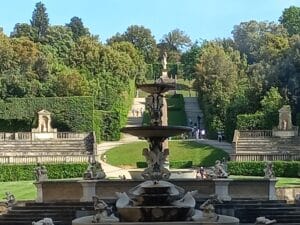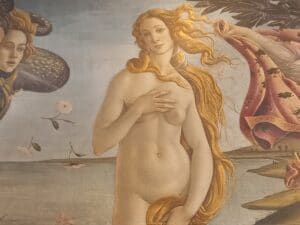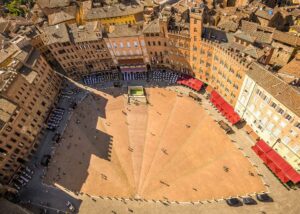It is hard not to be amazed by the enormous Pitti Palace and the immense Boboli Gardens. Let me take you around the last residence of the Medici, not only to enjoy the unbelievable rooms plotted with artworks but also to discover how the dynasty lived.
We visit the lavish Galleria Palatina (the Palatine Gallery) which is the principal art gallery of the last residence of the Medici. Here we will be overwhelmed by the magnificent frescoes, the stucco decoration and the family’s fabulous art collection with works by Botticelli, Raphael, Caravaggio, Titian, Murillo, Rubens and Canova.
We end our indoor tour admiring the so-called Royal Apartments, which hosted the Italian royal family Savoy during the few years Florence was the capital of the country. I’m pretty sure that even these rooms will impress you!
Just behind Pitti Palace are the marvellous Boboli Gardens
Not satisfied by owning the largest palace in town the Medici also laid out the flourishing Boboli Gardens which cover around 33 hectares. This Italian garden, embellished with fountains, statues and grottoes, is still today one of the most enchanting corner of Florence.
The Pitti Palace was originally built by the banker Luca Pitti, a rival of the Medici, in the mid 15th century. The palace was purchased by Eleonora of Toledo, the Spanish wife of Cosimo I, in 1550 for 900 scudi and the new owners enlarged the palace and carried out the garden at the back.
Obviously the palace and the gardens have gone through big transformations during these centuries. We have to bear in mind that the palace has hosted several dynasties from different parts of Europe. When Gian Gastone, the last grand duke of the Medici, died in 1737 the Duchy was assigned to the Austrian Habsburg-Lorraine family. In the early years of the 1800s Napoleon’s sister, Elisa Bacciocchi, resided in the palace though for obvious reasons her sejour did not last long and the Habsburg family could return to Tuscany.
With the unification of the Kingdom of Italy Florence became the second capital of the country, until Rome was conquered in 1870. The Pitti Palace, or the Royal Palace of the Savoy, was only handed over to the Italian state in 1919. Today the palace is split up into 6 different museums and the Boboli gardens.
